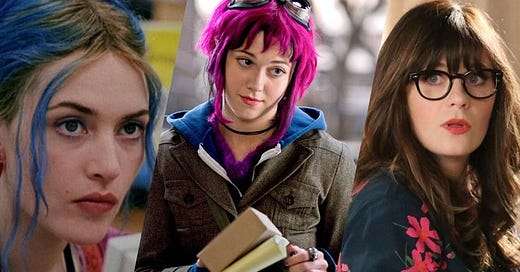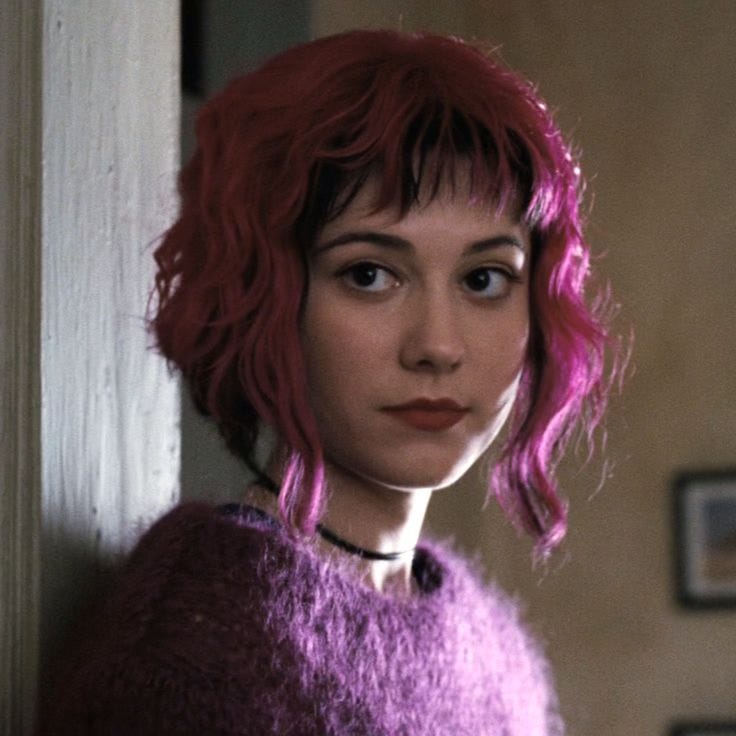What actually is a manic pixie dream girl?
“Manic pixie dream girl’ is a female trope in cinema. It was first used in 2005 by Nathan Rabin to describe Kirsten Dunst’s character in Elizabethtown , and is now categorised as an actual trope in film. They are often care-free , quirky and sarcastic , making them seem like fleshed out characters. However , their only purpose is motivating the lead character into becoming a better person , and so MPDGs are essentially a plot device.
Some examples of “manic pixie dream girls” are ; Romona Flowers (Scott Pilgrim vs the world) , Summer (500 days of summer) , Clementine (Eternal sunshine of the spotless mind) and that is just to name a few! They are often heavily romanticised in the eyes of the male lead , but once they show actual human traits , are discarded.
“I’m not a concept, Joel. I’m just a fucked-up girl who’s looking for my own peace of mind. I’m not perfect.” - Clementine , Eternal sunshine of the spotless mind
So, why is this harmful?
‘Manic pixie dream girls” only purpose in film is to assist the main character. They very rarely have any character development of their own , and fade out once the main character achieves his goal/becomes a better person. They are typically passive characters , enforcing gender roles in movies that can help portray women as not being important enough to have their own stories. The trope also pits women against each other , essentially sending the message that “being like other girls” is a bad thing. This can be damaging for young girls , as it makes them think they have to act a certain way in order to be “interesting.”
The Anti-MPDG
Luckily , not all women are portrayed this way in cinema! Characters like Amelie - from the film with the same name - shares similar characteristics with the manic pixie dream girl , whilst also being her own character. She is quirky , happy and interesting. However , her main focus is to help others NOT to save herself. And , her entire character arc doesn’t revolve around some guy. Some other examples of anti-MPDGs are ; Cassandra (Promising young women) , Amy (Gone girl) and Devi (Never have I ever.)
Now , I am not entirely criticising the MPDG trope. I , like many others , often see themselves in a lot of these characters. It can be refreshing to see a “weird” girl represented on screen , without being the main ridicule of the plot. Seeing female characters who are flawed and not perfect , makes any movie seem more like reality , as humans aren’t perfect. We’re messy.
However , as these characters are never the main focus of the plot , we never get to delve deeper into who they are as characters outside of what they do for the men in the movie. They help and support the lead of the film emotionally , but never get any support of their own. It enforces the idea that women are only worth something when their purpose is for a man.
In my eyes , it is time we change the way women are presented on screen. Of course , there are many empowering female characters who embody what it is actually like to be a woman , but there is still many who don’t. My favourite example of a female character actually becoming de-male gazed , is Natasha Romanoff (Marvel franchise.) People liked to hate on Black Widow , but that movie meant so much to me , as I’m sure it did for many other young girls. This shows the impact of empowering female characters!









I saw ramona from scott pilgrim and instantly followed. Its our fav movie. As he states “ I feel like this is true about you” lol evil exes ✅
Wait you ate with this